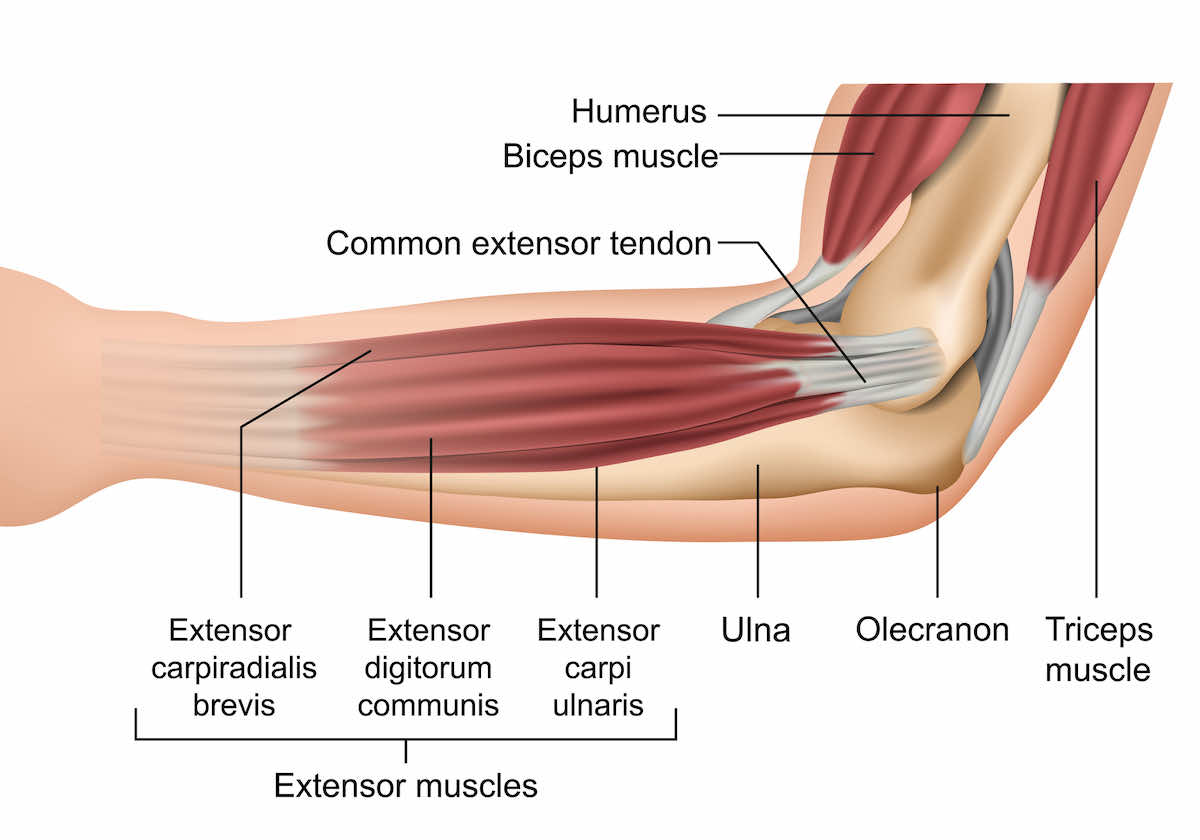Free download: Top 10 Natural & Easy Remedies for Joint Pain from Home. Learn these helpful remedies.
Estimated Reading Time: 5 minutes read
Every movement that you make with your arm, from the simplest tasks like pouring a glass of water to more intense activities like swinging a tennis racket, involves the elbow ligaments. These critical connective tissues contribute to the proper functioning of your elbow and, by extension, your entire arm. However, the significance of elbow ligaments is often understated and overlooked in general discussions about fitness and health.
This guide aims to highlight the crucial role of elbow ligaments in our daily activities and provide practical methods to strengthen them. Whether you’re an athlete, a worker who depends on arm strength, or simply a health-conscious individual, this guide can serve as your roadmap to healthier, stronger elbow ligaments. I will discuss the importance of elbow ligaments, and you will learn about effective exercises to enhance their strength and maintain your health.
Table of Contents
Understanding the Importance of Elbow Ligaments
Elbow ligaments are integral to the function of our arms and hands, acting as a stabilizing force within the elbow joint. They play a key role in both simple and complex movements, allowing us to carry out our daily tasks seamlessly. Elbow ligaments are particularly crucial for those involved in physical activities or sports that put repetitive stress on the arm. However, due to their constant use, they can be prone to injury.
Strengthening these ligaments can contribute to better arm performance, increased stability, and reduced risk of injury.
- Elbow ligaments provide stability to the elbow joint.
- They enable efficient hand and arm movements.
- They play a vital role in physical activities that involve arm movements.
- Strengthening elbow ligaments can enhance arm performance and reduce injury risk.
Elbow-Strengthening Exercises
Now let’s look at some exercises that can help you strengthen your elbow ligaments. Remember, you should perform these exercises within your comfort range, and it’s always a good idea to consult a physical therapist or a fitness professional before starting a new exercise regimen.
1. Wrist Flexion with Resistance Band


- Position yourself just like with wrist extension, only this time the palm should be facing up towards the ceiling, with the wrist straight.
- You can again use either a resistance band (light, medium or heavy) anchored under your foot, or a light free weight (2-3 lb.)
- Slowly flex the wrist (moving the palm towards you), then return to neutral.
- Repeat 10 repetitions for 3 sets.
2. Wrist Extension with Resistance Band

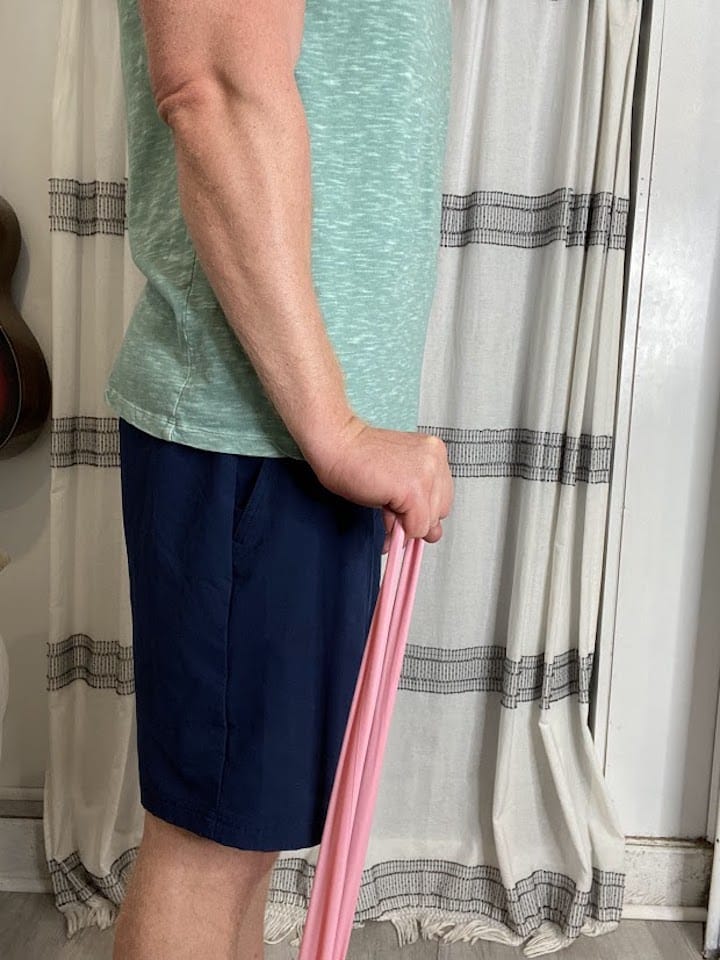
- Position yourself seated with the working arm supported on a table, such as your coffee table. The wrist and hand should be hanging off the edge of the table.
- The palm should be facing down towards the floor, with the wrist straight.
- You can use either a resistance band (light, medium or heavy) anchored under your foot, or a light free weight (2-3 lb.)
- Slowly extend the wrist (moving the top of the hand back towards you), then return to neutral.
- Repeat 10 repetitions for 3 sets.
3. Forearm Supination
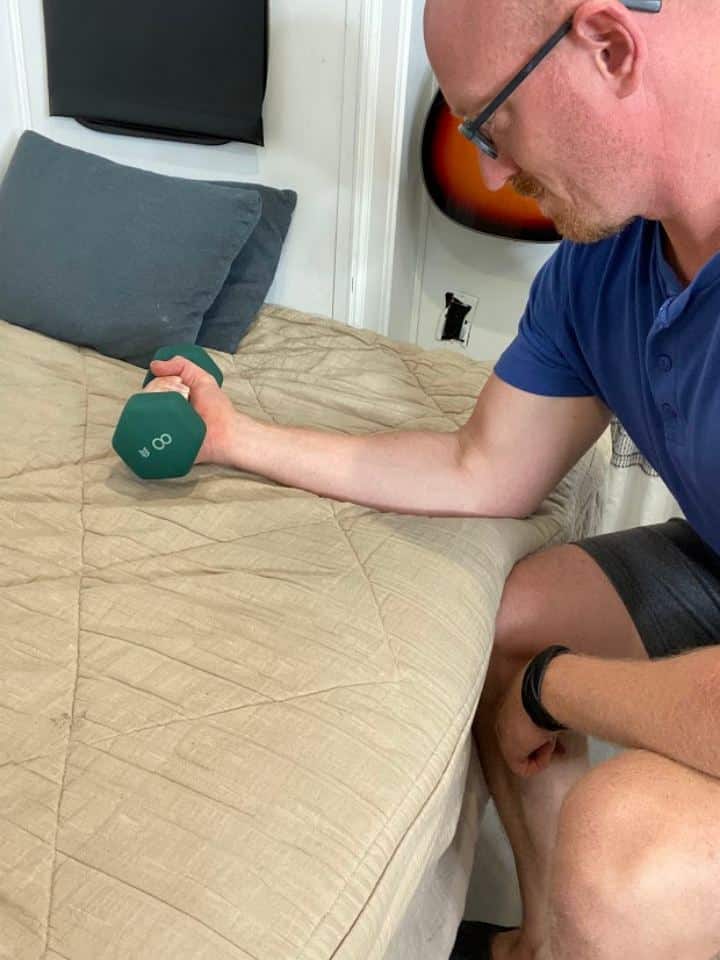
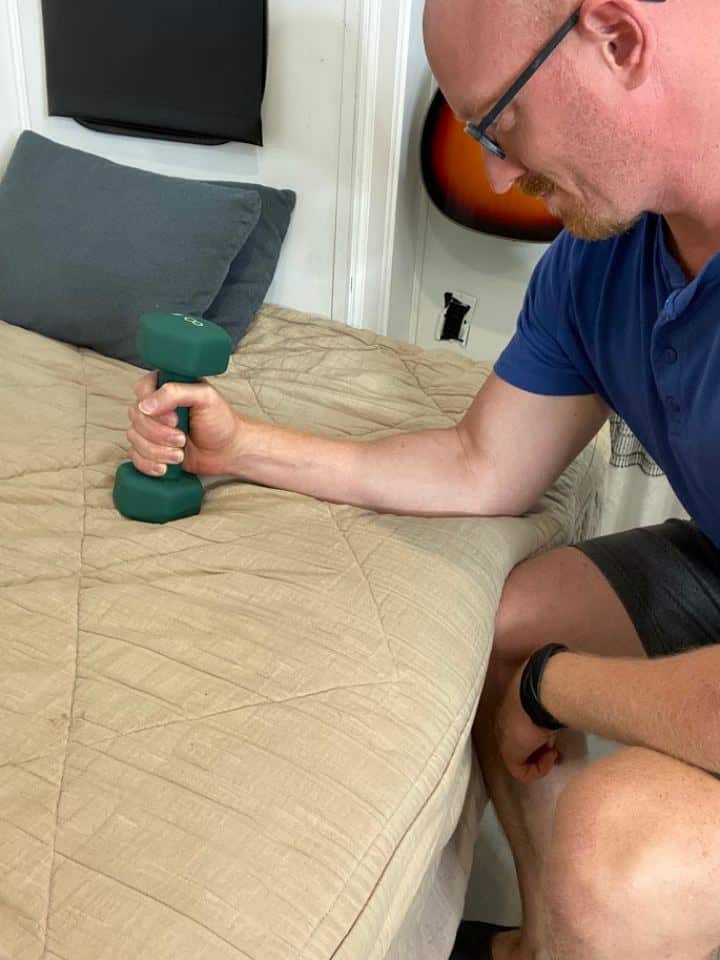
- Begin positioned just like you were for forearm pronation.
- This time, slowly turn the forearm until the palm faces up towards the ceiling, then return to your starting position.
- Repeat 10 repetitions for 3 sets.
4. Forearm Pronation


- Begin seated in a chair with the elbow supported on a surface (e.g., kitchen table).
- Position the forearm and wrist so that the thumb is facing the ceiling.
- Slowly turn the forearm until the palm faces down towards the surface, then return to your starting position.
- Repeat 10 repetitions for 3 sets.
5. Bicep Curls


- Begin standing with your feet shoulder-width apart, and your knees slightly bent.
- Hold a dumbbell in each hand with your palms facing forward and arms fully extended at your sides.
- Slowly bend your elbows, curling the dumbbells towards your shoulders while keeping your upper arms stationary.
- Pause briefly at the top of the movement, then slowly lower the dumbbells to your starting position.
- Repeat for 10 repetitions for 3 sets.
6. Tricep Extension with Resistance Band

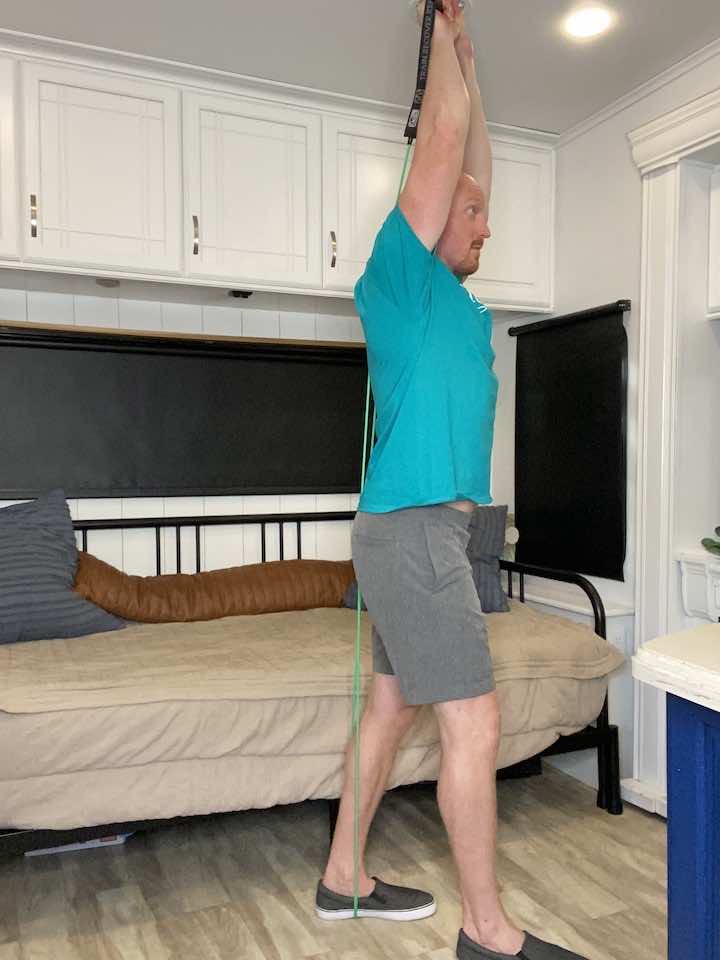
- Stand in the middle of the band with one foot, holding the other end of the band with both hands.
- Extend your arms straight up above your head.
- Lower the band behind your head, bending at the elbow and keeping your elbows pointing forward.
- Extend your arms back up, straightening your elbows.
- Repeat the movement for 10 repetitions, then switch to the other arm.
- Aim for 3 sets of this exercise.
Conclusion
Elbow ligaments, often overlooked, are crucial to the functioning of our arms. Their health and strength directly influence our ability to perform everyday activities, from simple tasks like lifting groceries to more complex actions like playing a sport. They facilitate the range of motion in our arms and provide the necessary stability to the elbow joint.
Incorporating the prescribed exercises into a regular fitness routine can significantly improve the strength and resilience of these vital structures. Consistent practice over time enhances overall arm performance and minimizes the risk of injuries. Therefore, prioritizing elbow health can lead to more robust and healthier elbows and, by extension, a more active and efficient lifestyle.


